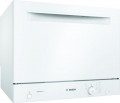Water consumption per cycle
The amount of water used by the machine in one wash cycle. Usually, it is indicated for a standard (universal) programme — at full load, without pre-rinsing, etc. Accordingly, in special modes, the consumption may differ from the indicated one.
The lower the consumption, the better. On the other hand, a reduction in consumption can harm the quality of the wash. So, when choosing an
cost-effective machine, you should pay special attention to the wash class (see below). In addition, only models of the same capacity can be compared in terms of consumption — after all, the more dishes, the more water is required to wash them.
Total number of programmes
The number of washing programmes (modes) provided in the machine. These programmes may differ in duration, exposure intensity, water temperature, dish material (e.g. for delicate dishes), etc. For more information on the different options, see "Programmes". Note that with the same number of programmes, their specific set in different models may be various. These details should be clarified separately.
Delay timer
A timer that starts the machine at a user-specified time eliminates the need to do this manually. This function is useful, for example, if the electricity tariffs during the day and at night are different. You can save on electricity bills by setting the start of washing at night.
End-of-cycle signal
Signal indicates that the machine has finished working. Many dishwashers are quiet, and without a special signal, it can be difficult to determine if the programme has ended.
Controls
—
Rotary knob. Usually, it is not the only control: the rotary knob is used to select the operating mode, and the remaining functions of the dishwasher (start-stop programmes, timers, etc.) are controlled by buttons. However, panels with rotary knobs still have their specifics, so they are distinguished as a separate type of control. Technically, this option can be used in dishwashers of all price categories, but it is found mainly in relatively inexpensive models.
—
Push-button controls. This option allows you to work even with very extensive functionality, while buttons are cheaper than
touch controls(see below). Therefore, push-button controls can be found in all classes of dishwashers, from low-cost to top-end ones. Its main disadvantage is the presence of slots between the buttons and the panel, where dirt can clog; cleaning out this dirt can be quite difficult.
— Touch controls. These controls are easier to operate than buttons (see above) — instead of pressing, a light touch is enough. Touch controls are easy to clean. Do not forget that such control gives the dishwasher a modern and advanced appearance. On the other hand, touch controls are more expensive than other types of control. Therefore, they are used mainly in high-end models.
Display
The machine has its own
display. Typically, this is the simplest LCD screen capable of displaying multiple characters. However, even such a screen provides additional convenience and makes the operation more intuitive: various notifications can be displayed on it, in particular, about the current operating mode, the remaining time, set timers, the remaining detergent, etc. More advanced dishwashers can be equipped with
a TFT display with advanced features. But this does not affect the washing process.
Inverter motor
The presence of an inverter motor in the design of the dishwasher.
Inverter motors differ from conventional ones in the absence of a commutator with brushes (which is why they are also called brushless or brushless). Such units have higher efficiency (and, accordingly, less energy consumption), low noise levels and improved safety — the absence of brushes means a minimum likelihood of sparks. On the other hand, other things being equal, models with inverter motors are noticeably more expensive.
Noise level
It is an approximate noise level produced by the dishwasher during operation. In modern models, this parameter can range from 38 – 39 dB (muffled human voice) to 59 – 60 dB (rather a loud conversation); more detailed decoding of what sound corresponds to a particular number of decibels can be found in special tables. Anyway, the
low noise level contributes to the comfortable use of the device. It is important if the dishwasher is to be used at night.
Noise class
It allows one to decipher the values of the noise level in decibels. It is marked, like other classes, in Latin letters, where A is the quietest class of dishwashers.

